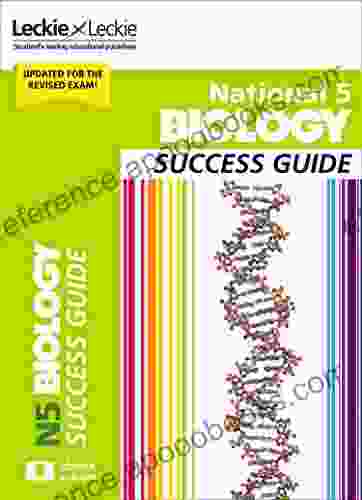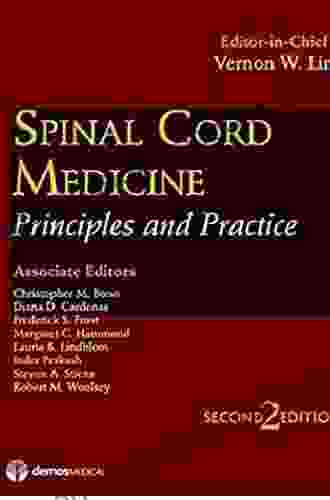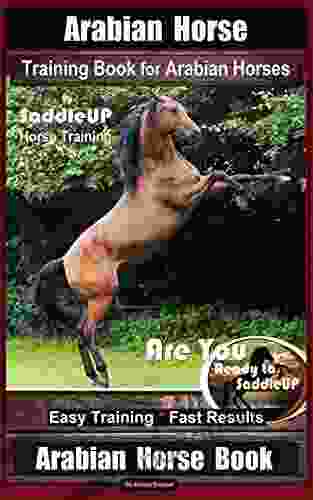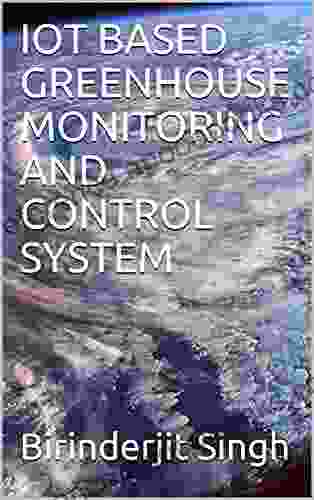IoT-Based Greenhouse Monitoring and Control System: A Comprehensive Guide to DIY Greenhouse Automation

Greenhouses have long been used to extend the growing season and protect plants from harsh outdoor conditions. However, traditional greenhouses can be labor-intensive and require constant monitoring to maintain optimal environmental conditions for plant growth.
The Internet of Things (IoT) offers a transformative solution to these challenges. By integrating sensors, actuators, and a central control system, you can create a smart greenhouse that automatically monitors and controls environmental parameters such as temperature, humidity, lighting, and irrigation. This not only simplifies greenhouse management but also optimizes plant growth and resource utilization.
This article will guide you through every aspect of building your own IoT-based greenhouse monitoring and control system. We will cover topics such as:
4.7 out of 5
| Language | : | English |
| File size | : | 5957 KB |
| Text-to-Speech | : | Enabled |
| Screen Reader | : | Supported |
| Enhanced typesetting | : | Enabled |
| Word Wise | : | Enabled |
| Print length | : | 261 pages |
| Lending | : | Enabled |
- Choosing the right sensors and actuators
- Connecting sensors and actuators to a central controller
- Programming the control system to automate greenhouse operations
- Monitoring and controlling the greenhouse remotely
- Troubleshooting common issues
By following the steps outlined in this article, you will be able to build a fully functional IoT-based greenhouse monitoring and control system that will help you grow healthy plants and maximize your greenhouse's efficiency.
The first step in building an IoT-based greenhouse monitoring and control system is to select the appropriate sensors and actuators. Sensors are used to measure environmental parameters such as temperature, humidity, light intensity, and soil moisture. Actuators are used to control environmental parameters such as temperature, humidity, lighting, and irrigation.
When choosing sensors and actuators, it is important to consider the following factors:
- Accuracy: The accuracy of a sensor or actuator determines how closely its readings or actions match the actual environmental conditions.
- Resolution: The resolution of a sensor or actuator determines the smallest change in environmental conditions that it can detect or control.
- Response time: The response time of a sensor or actuator determines how quickly it reacts to changes in environmental conditions.
- Reliability: The reliability of a sensor or actuator determines how consistently it performs over time.
- Cost: The cost of a sensor or actuator is an important factor to consider when building a greenhouse monitoring and control system.
There are many different types of sensors and actuators available on the market. Some of the most common sensors used in greenhouse monitoring and control systems include:
- Temperature sensors: Temperature sensors measure the temperature of the air or soil in the greenhouse.
- Humidity sensors: Humidity sensors measure the relative humidity of the air in the greenhouse.
- Light intensity sensors: Light intensity sensors measure the amount of light available to plants in the greenhouse.
- Soil moisture sensors: Soil moisture sensors measure the moisture content of the soil in the greenhouse.
Some of the most common actuators used in greenhouse monitoring and control systems include:
- Actuators: Actuators control the temperature of the air or soil in the greenhouse by turning on or off heating or cooling systems.
- Humidifiers and dehumidifiers: Humidifiers and dehumidifiers control the humidity of the air in the greenhouse by adding or removing moisture.
- Lighting systems: Lighting systems control the amount of light available to plants in the greenhouse by turning on or off artificial lights.
- Irrigation systems: Irrigation systems control the flow of water to plants in the greenhouse by turning on or off water pumps and valves.
Once you have selected the appropriate sensors and actuators, you need to connect them to a central controller.
The central controller is the brain of the IoT-based greenhouse monitoring and control system. It collects data from the sensors, processes the data, and sends commands to the actuators. The central controller can be a dedicated microcontroller, a single-board computer, or a cloud-based platform.
When connecting sensors and actuators to the central controller, it is important to follow the manufacturer's instructions carefully. In general, sensors and actuators are connected to the central controller using wires or wireless communication protocols such as Bluetooth or Wi-Fi.
Once the sensors and actuators are connected to the central controller, you need to program the control system to automate greenhouse operations.
The control system is responsible for monitoring environmental parameters and controlling actuators to maintain optimal conditions for plant growth. The control system can be programmed using a variety of programming languages. Some of the most common programming languages used for IoT applications include Python, C++, and JavaScript.
When programming the control system, it is important to consider the following factors:
- Control algorithms: Control algorithms determine how the control system responds to changes in environmental parameters.
- Set points: Set points are the target values for environmental parameters such as temperature, humidity, and light intensity.
- Hysteresis: Hysteresis is a technique used to prevent the control system from oscillating around the set point.
The control system should be programmed to monitor environmental parameters and compare them to the set points. If an environmental parameter deviates from the set point, the control system should send a command to the appropriate actuator to correct the condition.
For example, if the temperature in the greenhouse drops below the set point, the control system should send a command to the heating system to turn on. If the humidity in the greenhouse rises above the set point, the control system should send a command to the dehumidifier to turn on.
One of the biggest advantages of an IoT-based greenhouse monitoring and control system is that it can be monitored and controlled remotely. This allows you to manage your greenhouse from anywhere with an internet connection.
To monitor and control the greenhouse remotely, you can use a web-based dashboard or a mobile app. The dashboard or app will allow you to view real-time data from the sensors, adjust set points, and control actuators.
Remote monitoring and control can be especially useful if you are away from your greenhouse for extended periods of time. You can use the dashboard or app to check on your plants and make sure that the greenhouse is operating properly.
Even the most well-designed IoT-based greenhouse monitoring and control system can experience problems from time to time. Some of the most common problems include:
- Sensor or actuator failure: Sensors and actuators can fail for a variety of reasons, including power outages, loose connections, and environmental damage.
- Control system errors: Control system errors can occur due to programming errors, hardware failures, or software updates.
- Network problems: Network problems can prevent the central controller from communicating with the sensors, actuators, and remote monitoring systems.
If you experience any problems with your IoT-based greenhouse monitoring and control system, it is important to troubleshoot the system to identify the cause of the problem. Once you have identified the cause of the problem, you can take steps to resolve it.
Building an IoT-based greenhouse monitoring and control system is a great way to improve the efficiency of your greenhouse and optimize plant growth. By following the steps outlined in this article, you can build a system that will help you grow healthy plants and enjoy a thriving indoor garden.
4.7 out of 5
| Language | : | English |
| File size | : | 5957 KB |
| Text-to-Speech | : | Enabled |
| Screen Reader | : | Supported |
| Enhanced typesetting | : | Enabled |
| Word Wise | : | Enabled |
| Print length | : | 261 pages |
| Lending | : | Enabled |
Do you want to contribute by writing guest posts on this blog?
Please contact us and send us a resume of previous articles that you have written.
 Book
Book Novel
Novel Page
Page Chapter
Chapter Text
Text Story
Story Genre
Genre Reader
Reader Library
Library Paperback
Paperback E-book
E-book Magazine
Magazine Newspaper
Newspaper Paragraph
Paragraph Sentence
Sentence Bookmark
Bookmark Shelf
Shelf Glossary
Glossary Bibliography
Bibliography Foreword
Foreword Preface
Preface Synopsis
Synopsis Annotation
Annotation Footnote
Footnote Manuscript
Manuscript Scroll
Scroll Codex
Codex Tome
Tome Bestseller
Bestseller Classics
Classics Library card
Library card Narrative
Narrative Biography
Biography Autobiography
Autobiography Memoir
Memoir Reference
Reference Encyclopedia
Encyclopedia Christopher M Loftus
Christopher M Loftus Anthony San
Anthony San Damtew Teferra
Damtew Teferra Addison Fox
Addison Fox Adam Blade
Adam Blade Shelley G Trebesch
Shelley G Trebesch Aaron Fisher
Aaron Fisher James M Goldgeier
James M Goldgeier Pepper Winters
Pepper Winters Eqbal Ahmad
Eqbal Ahmad K M Shea
K M Shea Maia Kobabe
Maia Kobabe Joe Schreiber
Joe Schreiber A S Bhalla
A S Bhalla L M Bogad
L M Bogad Adam M Sowards
Adam M Sowards Adolf Hackmack
Adolf Hackmack Adam Moon
Adam Moon Margean Gladysz
Margean Gladysz Kristina Mcmorris
Kristina Mcmorris
Light bulbAdvertise smarter! Our strategic ad space ensures maximum exposure. Reserve your spot today!
 Mason PowellFollow ·14.3k
Mason PowellFollow ·14.3k Emanuel BellFollow ·5k
Emanuel BellFollow ·5k Rudyard KiplingFollow ·4.7k
Rudyard KiplingFollow ·4.7k Anton FosterFollow ·10.9k
Anton FosterFollow ·10.9k William PowellFollow ·8.9k
William PowellFollow ·8.9k Fernando BellFollow ·7.1k
Fernando BellFollow ·7.1k Brady MitchellFollow ·14.7k
Brady MitchellFollow ·14.7k David Foster WallaceFollow ·17k
David Foster WallaceFollow ·17k

 Justin Bell
Justin BellUnlock National Biology Success: The Ultimate Guide to...
Mastering the Fundamentals: A Comprehensive...
 Luke Blair
Luke BlairAC/DC: The Early Years with Bon Scott – A Thunderstruck...
In the annals of rock and roll history, few...

 Darren Nelson
Darren NelsonSpinal Cord Medicine Second Edition: The Comprehensive...
The second edition of Spinal Cord Medicine...

 Cole Powell
Cole PowellArabian Horse Training: Unlock the Secrets for a...
Indulge in the captivating world of Arabian...

 Oscar Wilde
Oscar WildeRevise Curriculum For Excellence SQA Exams: The Ultimate...
The Scottish...

 David Peterson
David PetersonEndoscopic Ear Surgery: A Comprehensive Guide for...
Endoscopic Ear...
4.7 out of 5
| Language | : | English |
| File size | : | 5957 KB |
| Text-to-Speech | : | Enabled |
| Screen Reader | : | Supported |
| Enhanced typesetting | : | Enabled |
| Word Wise | : | Enabled |
| Print length | : | 261 pages |
| Lending | : | Enabled |











